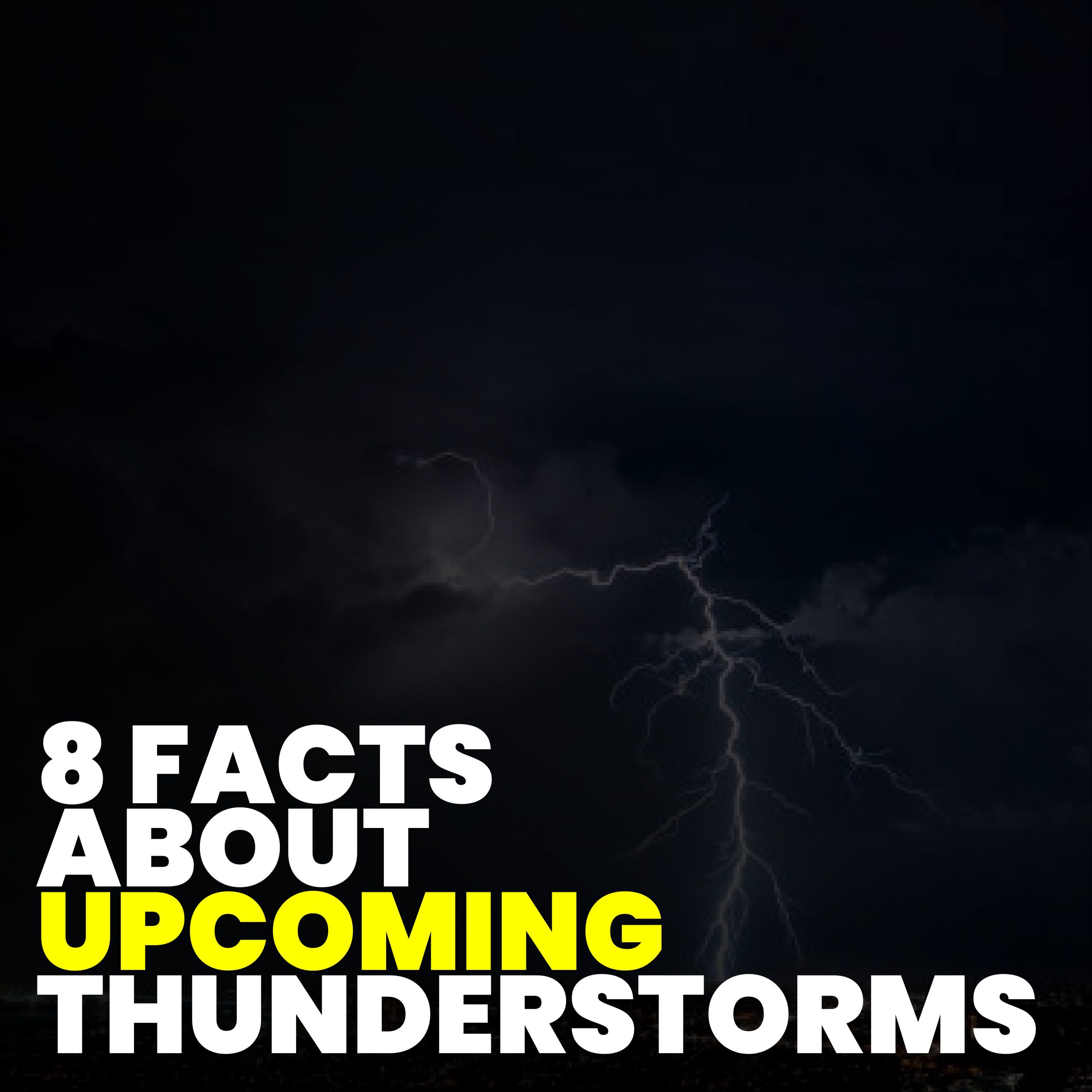Introduction
Understanding the thunderstorm forecast is essential for everyone in South Africa, where thunderstorms are a regular part of the weather, especially during the summer months. Accurate forecasts help citizens prepare for severe weather conditions, including lightning, heavy rain, and strong winds. With the right information, you can reduce the risks associated with these storms and stay safe.
In this article, we’ll explore the five key factors that influence thunderstorms in South Africa and provide tips on how to stay prepared. Whether you live in an urban area or rural region, knowing what to expect from a thunderstorm forecast is crucial for your safety.
Thunderstorm Forecast: Key Meteorological Factors
The thunderstorm forecast is influenced by several meteorological factors. Meteorologists study these conditions to determine when and where storms will occur. Some of the key factors include:
- Temperature: Thunderstorms often develop when warm air at the surface rises and meets cooler air in the atmosphere. The greater the temperature difference, the more likely a storm will develop.
- Humidity: High levels of moisture in the air can fuel thunderstorms. This moisture rises and cools in the atmosphere, leading to cloud formation and the potential for storms.
- Atmospheric Instability: Instability occurs when warm air rises rapidly into cooler air, causing thunderstorms to form. Forecasters monitor this instability to predict when storms are likely to occur.
- Wind Patterns: Wind patterns, such as wind shear (changes in wind speed and direction), can influence the development and movement of thunderstorms.
- Pressure Systems: Low-pressure systems are associated with thunderstorms, as they encourage the upward movement of air that is necessary for storm development.
By studying these factors, meteorologists can provide accurate thunderstorm forecasts and issue warnings for areas at risk.
Thunderstorm Forecast: What to Expect in Severe Storms
When severe thunderstorms are forecasted, it’s important to understand the characteristics of these storms. Severe thunderstorms in South Africa can be dangerous and may bring:
- Heavy Rainfall: Intense rainfall that can lead to flash flooding.
- Strong Winds: Winds can exceed 100 km/h, causing damage to structures, trees, and power lines.
- Lightning: Frequent and dangerous lightning strikes, which can cause fires and power outages.
- Hail: In severe thunderstorms, hail can damage crops, vehicles, and buildings.
Understanding these storm features helps you prepare for severe conditions and take necessary precautions.
Thunderstorm Forecast: Regional Impact in South Africa
South Africa’s diverse geography means that thunderstorms can affect different regions in various ways. Some areas are more prone to thunderstorms than others due to their climate and terrain.
- Gauteng and Mpumalanga: These regions experience frequent thunderstorms, especially in the summer. High levels of humidity and warm temperatures often trigger thunderstorms.
- KwaZulu-Natal: Coastal areas can experience severe storms, including heavy rain and high winds, due to the interaction between warm ocean air and inland conditions.
- Western Cape: Though less common, thunderstorms in this region can bring strong winds and hail, often due to cold fronts meeting warmer air from the interior.
By paying attention to regional thunderstorm forecasts, you can better understand how storms will affect your area and prepare accordingly.
Thunderstorm Forecast: Lightning Risks and Safety Measures
Lightning is one of the most dangerous aspects of thunderstorms. It can strike the ground, trees, buildings, and even people, causing severe injuries or fatalities. The thunderstorm forecast often includes warnings about lightning risks, especially when storms are expected to be particularly severe.
To stay safe during a thunderstorm:
- Avoid outdoor activities: Stay indoors during a thunderstorm, especially if lightning is expected.
- Stay away from windows: Close all windows and stay away from them during the storm to avoid injury from breaking glass.
- Do not shelter under trees: While it may seem like a safe place to stay dry, trees attract lightning and can cause fatal injuries.
- Unplug electronics: Lightning can cause power surges that damage electronic devices. It’s wise to unplug important electronics during a storm.
Thunderstorm Forecast: Role of Technology in Prediction
Advancements in technology have greatly improved the accuracy of thunderstorm forecasts. Weather satellites, radar systems, and computer modeling are used to track thunderstorms and predict their paths. These technologies allow meteorologists to provide timely alerts and help people prepare for severe weather.
- Weather Satellites: These track cloud formation and storm development from space, providing early warnings.
- Radar Systems: Weather radar detects precipitation and storm intensity, allowing forecasters to track the movement of storms in real time.
- Weather Apps: Many weather apps provide real-time thunderstorm forecasts, enabling people to monitor storm development on their smartphones.
Technology helps keep communities informed and ready to take action when severe thunderstorms are forecast.
Thunderstorm Forecast: How to Prepare for Severe Weather
Being prepared for severe thunderstorms can make all the difference in reducing damage and ensuring safety. Here are some steps you can take to prepare for a thunderstorm forecast:
- Secure outdoor items: Bring in furniture, tools, and anything that can become a projectile in strong winds.
- Check your roof and windows: Ensure that your windows are secured, and your roof is in good condition to withstand high winds and hail.
- Prepare an emergency kit: Include essentials like water, food, flashlights, a battery-powered radio, and a first aid kit.
- Know evacuation routes: If you live in an area prone to flooding, make sure you know the nearest safe routes to evacuate.
By taking these steps, you can ensure that you are ready when a thunderstorm is forecast to hit.
Thunderstorm Forecast: Agricultural Impact
Thunderstorms can have both positive and negative effects on agriculture in South Africa. On one hand, rain from thunderstorms provides much-needed water for crops. On the other hand, severe storms can damage crops, particularly through hail and flooding.
Farmers rely heavily on thunderstorm forecasts to plan for the weather. Here’s how they prepare:
- Hail Protection: Farmers may cover sensitive crops with protective netting or other materials to reduce damage from hail.
- Water Management: While thunderstorms can bring beneficial rainfall, farmers must be cautious of flash flooding, which can damage crops and farmland.
- Farm Equipment: Moving machinery and equipment to sheltered areas to prevent damage from high winds and heavy rainfall.
By following thunderstorm forecasts, farmers can better protect their livelihoods.
Thunderstorm Forecast: Economic Consequences
Severe thunderstorms can have serious economic implications for businesses and homeowners in South Africa. The costs of repairs, insurance claims, and emergency response can add up quickly. For example, floods caused by heavy rain can damage infrastructure, including roads, power lines, and buildings.
In addition to infrastructure damage, businesses may experience interruptions in operations due to power outages or flooding. It’s essential for businesses to stay informed about thunderstorm forecasts and implement preparedness plans to minimize potential losses.
Thunderstorm Forecast: How to Stay Informed
Staying informed about thunderstorm forecasts is crucial to preparing for severe weather. Reliable sources for weather updates include:
- The South African Weather Service (SAWS): The official source for weather warnings and forecasts in South Africa.
- Weather Apps: Many apps offer real-time updates on thunderstorms, including alerts for your area.
- Social Media: Follow official weather channels on social media for the latest weather updates.
By staying connected to these sources, you can receive timely information and act quickly when severe weather is expected.
FAQs
- How can I get a thunderstorm forecast?
Thunderstorm forecasts are available from weather services like SAWS, weather apps, and local news outlets. - What should I do if a severe thunderstorm is forecasted?
Stay indoors, avoid electrical appliances, and ensure all outdoor items are secured. - Can thunderstorms cause power outages?
Yes, lightning and strong winds from thunderstorms can cause power surges and outages. It’s important to prepare for these disruptions.
Conclusion
The thunderstorm forecast is a vital tool for staying safe and prepared during extreme weather events. Understanding the factors that influence thunderstorms, staying informed, and taking necessary precautions can help reduce the risks associated with these storms. By following the advice in this article, you’ll be better prepared for the next thunderstorm forecast in your area.




